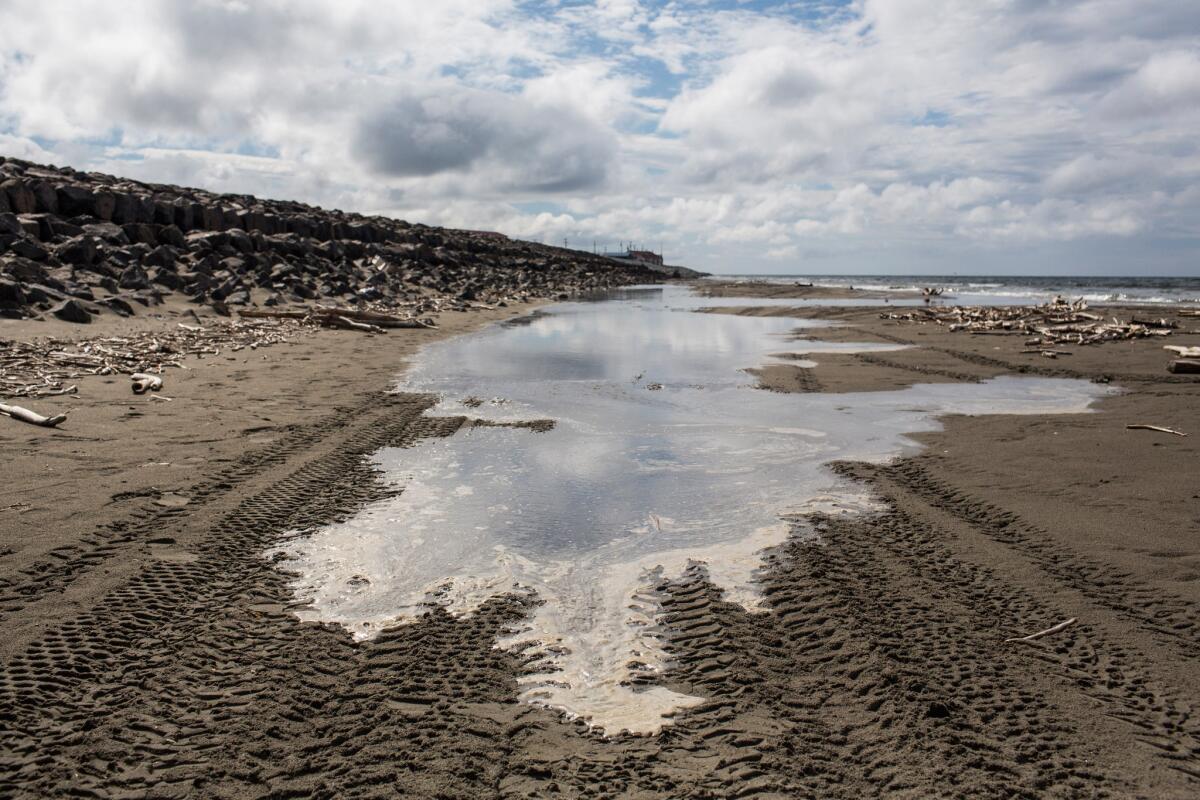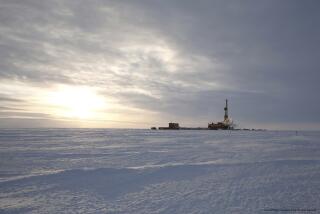Shell receives final approval to drill in Arctic, but with new conditions

The tide comes in along the Chukchi Sea in Shishmaref, Alaska.
- Share via
Reporting from Seattle — Royal Dutch Shell received final approval from the Obama administration on Wednesday to begin exploratory drilling for oil in the Arctic this summer, but with new restrictions that will alter the company’s plans.
Shell, which has faced complications and challenges from environmentalists for years as it has pursued drilling in the Arctic, received initial government approval in May. Since then, it has deployed more than two dozen vessels to the drilling site in the Chukchi Sea, off the northwestern coast of Alaska.
The company could begin preparatory work as early as next week, but the new limitations will delay when it can drill in areas that contain oil. Wednesday’s decision also prevents Shell from its intended plan to drill in two areas at the same time.
The Bureau of Safety and Environmental Enforcement, which is part of the Interior Department, issued the final permits. The bureau said Shell can initially drill only what are known as top holes, staying above oil-bearing areas, because a capping stack, a critical piece of safety equipment that is required to be nearby to help contain a potential spill, is on an icebreaking vessel that was forced to leave the area for repairs this month. The vessel, M/V Fennica, has a fracture in its hull and is to be repaired in Portland, Ore.
The administration said Shell could submit a new application to drill into oil-bearing areas “if and when the M/V Fennica is capable of being deployed in the Chukchi Sea and Shell is able to satisfy the capping stack requirement.”
A spokeswoman for Shell, Kelly op de Weegh, said Wednesday the company expects to complete the repairs to the Fennica in time for it to return to the Arctic and drill for oil this summer. The company must be out of the area by the second half of September.
The last time Shell began exploratory work, in 2012, it was allowed to drill only top holes. That effort was plagued by problems, including the grounding of a drill rig, the Kulluk.
This year, Shell’s initial plan included drilling simultaneously in two parts of a section of the Chukchi known as the Burger Prospect. But the administration said Wednesday that the company can work in only one area at a time because the sites are within 15 miles of each other. Rigs working that close to one another create potential disruptions to protected walruses that live in the region.
The Chukchi is in the western Arctic Ocean, which is believed to hold more than 25 billion barrels of recoverable oil. Environmental groups have long cited the dangerous conditions of working in the remote Arctic, which is hundreds of miles from major cities and basic support services. They have said drilling for oil in the Arctic conflicts with the administration’s efforts to fight climate change.
Last week, in a letter to Interior Secretary Sally Jewell, several groups said the problems with the Fennica and the 15-mile rule make it impossible for Shell to honor its environmental commitments under its drilling plan. They had called on the administration to deny final approval.
The groups were not pleased with Wednesday’s decision.
“The Department of the Interior has shown a willingness to bend rules and blur lines to accommodate Shell,” said Michael LeVine, a lawyer for Oceana. “We believe the permits approved today are unwise.”
Twitter: @yardleyLAT
More to Read
Sign up for Essential California
The most important California stories and recommendations in your inbox every morning.
You may occasionally receive promotional content from the Los Angeles Times.











